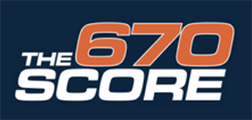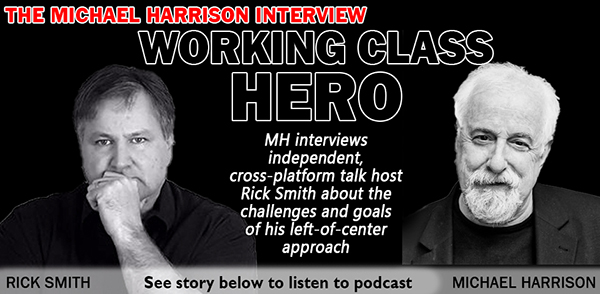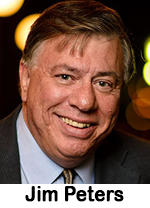By Bill Bartholomew
Talk Host/Podcaster/Journalist/Musician
 Folks in the Gen Z and millennial demographics are heavily engaged in political issues, care about news in their communities and the world, and are constantly bombarded with content. So why are they less likely to tune into and interact with news/talk radio than older demographics?
Folks in the Gen Z and millennial demographics are heavily engaged in political issues, care about news in their communities and the world, and are constantly bombarded with content. So why are they less likely to tune into and interact with news/talk radio than older demographics?
Talk radio has historically skewed older, and from an ad portfolio standpoint, is often targeted at the coveted 35-54 and 55+ demographics. However, in a world where social media influencers and podcasters supply information to millions of young consumers, news/talk radio should be able to effectively compete for the ears of younger generations in a comparable, if not expanded way.
For all of the anecdotal and hard evidence that terrestrial radio may be trending in a downward direction, the format continues to have a vast reach. It is convenient to engage with it in automobiles, and occasionally in home or office settings. Yet, while younger generations listen to radio, news/talk is not the format that they turn to by and large.
Unlike many digital-first content producers, radio retains a unique quality: authority. By virtue of editorial standards, FCC regulation and brand – things that social media and podcasts often lack – radio has the unique ability to deliver credible, vetted, nuanced and universally trustworthy content that can instantaneously adapt to meet the needs of the moment. This is true in everything from natural disasters to rapidly evolving breaking news stories, providing a channel for immediate, reactionary insight and analysis.
There are several steps that news/talk radio should pursue in earnest to adapt to the current climate of content consumption, particularly by younger listeners, that can reach, and most importantly, retain broader, younger, more diverse and more engaged audiences.
- Introduce younger people into the conversation.
Too often, Gen Z and millennials are skewered by older hosts, mocked for their perceived naivety, unchecked optimism and me-first approach. While some of these qualities can be accurate, that approach reflects a disconnect between older generations and the experience of younger ones. Millennials and Gen Z have grown up in a post-9/11 world replete with “endless wars”, the fallout from the 2008 financial crisis, runaway student debt, a massive housing crisis, the mental health stressors of social media, Covid19’s impact on traditional youth experiences, climate change, a deeply bifurcated political environment and a constantly evolving quest for social justice. Through these experiences, younger generations offer an important perspective that should be assigned the same news value as experts from older generations.
Are you discussing shifts towards electric vehicles? Bring on someone from Gen Z to share their perspective on why steps towards carbon neutrality are important to them. Engaging a conversation on the president’s approval rating? Perhaps younger conservative and leftist voices should be included in the conversation. Discussing immigration? How about the perspective of a younger member of a Latino organization?
By giving younger generations and more diverse guests a platform, stations can simultaneously expand their content and reach. With consistency, the station’s brand will become more familiar to younger potential listeners who may be inclined to tune in to hear someone who shares their identity and perspective on – here’s that word again – a platform of authority. Let the guest do the work of establishing the credibility and importance of your station or talk show to younger audiences by posting about their appearance on social media, sharing audio clips and mentioning to their peers. It will build familiarity and trust among those generations, who in turn, will begin to tune in on a more regular basis.
Stations should also consider bringing more younger, competent voices into on-air roles, whether that be through reporting, segments, fill-in hosts, weekend shows or full-time hosts.
- Meet the audience where they are: their phones.
As mentioned above, the convenience of simply turning on AM/FM radio is highly appealing in automobiles, though as Apple Carplay continues to adapt and evolve, digital-first content is likely to become as simple and convenient in the near future.
Talk radio needs to make consuming their product on smartphones as simple and direct as turning on a traditional radio. This means no clunky websites, no lengthy pre-roll spots, a reliable stream connection and a “one touch” means of turning on and off the station. This should also mean expanding talk shows to high-quality video livestreams, following in the footsteps of the top YouTube and Twitch performers; developing unique content for TikTok and Instagram; building podcasts that are focused on specific issues, and; providing interaction via text and chat.
Radio has the ability to be the ultimate livestreamer, social media influencer and podcaster, but rarely harnesses these platforms in a meaningful way.
It is not enough to simply strive to “expand a digital presence”; stations and shows must engage in the hard work of building platform-specific content with their brands.
- Music, cultural references and themes for the modern age.
A few weeks ago on a seemingly benign episode of the TV show FOX NFL Sunday, panelists Jimmy Johnson and Terry Bradshaw offered an example of the type of cultural adaptation that sophisticated writers and producers provide their brands. While describing a fight between two football players, Mr. Johnson said something to the effect of “when it comes to these two, what’s that Taylor Swift song?”, and then in synch with Mr. Bradshaw, “bad blood!”. It is highly unlikely that these two 70+ men listen to Taylor Swift’s music with any regularity or would simultaneously pull the “Bad Blood” reference. Yet, with excellent preparation that played into the greater cultural moment as well as the specific, current Taylor Swift/NFL overlap, in a six-second span, FOX NFL Sunday was able to give the illusion that their panelists are contemporary, hip and plugged into “what is going on”. Is your station or show plugged into what’s going on? Do you use contemporary music for bumps? Are your images – including headshots and social content – modern, interesting and engaging or are they more akin to a miscellaneous real estate agent? You are a performer in an entertainment business that, while certainly paying homage to the past and lineage of the industry, must be contemporary in aural and visual presentation. This goes for everything from wardrobe on video and in photo to fonts on graphic design.
How often do you or your producer read Pitchfork to learn about new music that is breaking this week? How often do you or your producer read Variety to understand major trends that are happening in the broader entertainment industry? What live events are you broadcasting from, covering and building partnerships with? You should strive to be cutting edge.
- We need a friend now more than ever.
This is something that goes for all audiences, but particularly for younger ones. It’s OK, in fact, great to be yourself, present yourself from your generation and retain the authoritative stance that has built your brand. Take a look at the success that sports talker Mike Francesa enjoyed by leaning into his persona – and in turn – developing legions of younger listeners that fell in love with his dad-like delivery and frequent meltdowns.
Few things are as uncomfortable to see as a 40+ person dressing or acting like a teenager. Younger listeners want that senior, experienced, trusted friend to entertain them, inform them, and at times, tell them that everything is going to be OK. You can help make sense of the world for younger audiences, something that is absolutely essential in the modern era.
Through attracting younger listeners by including them in the conversation, effectively delivering content on smartphones, presenting a cutting-edge entertainment product and continuing to serve as a trusted friend, news/talk radio can greatly expand its reach, relevance and revenue.
To that point, some younger listeners who discover a radio station or show via any of the above entry points will likely work backwards to the traditional AM/FM dial. Like the resurgence of vinyl records, AM radio in particular has the opportunity to become a hip delivery format for discerning younger listeners.
The big question is: are radio companies, stations and hosts prepared to do the hard work of reimaging their product?
Share this with your network
 should keep quarterback Justin Fields or trade him in the upcoming draft for the #1 pick. Parkins and Spiegel will kick off the discussion from Audacy Chicago’s Blue Cross Blue Shield Performance Stage from 2:00 pm to 6:00 pm. Football experts and a live audience will join Parkins and Spiegel to weigh in on the looming decision. “The Score” ran a contest this week for a chance to attend the “QB1 Town Hall.” These winners will make up the crowd that will have the opportunity take part in the debate. WSCR VP of programming Mitch Rosen says, “This decision will determine the entire season’s trajectory and the fans are passionate about their views on it. We’re looking forward to opening up this conversation to our listeners and Bears faithful.” The show is being made available via the Audacy app & website, the station’s Twitch, and YouTube channels.
should keep quarterback Justin Fields or trade him in the upcoming draft for the #1 pick. Parkins and Spiegel will kick off the discussion from Audacy Chicago’s Blue Cross Blue Shield Performance Stage from 2:00 pm to 6:00 pm. Football experts and a live audience will join Parkins and Spiegel to weigh in on the looming decision. “The Score” ran a contest this week for a chance to attend the “QB1 Town Hall.” These winners will make up the crowd that will have the opportunity take part in the debate. WSCR VP of programming Mitch Rosen says, “This decision will determine the entire season’s trajectory and the fans are passionate about their views on it. We’re looking forward to opening up this conversation to our listeners and Bears faithful.” The show is being made available via the Audacy app & website, the station’s Twitch, and YouTube channels. 


 Folks in the Gen Z and millennial demographics are heavily
Folks in the Gen Z and millennial demographics are heavily 
 night. But they’re all pretty much just talking to their friends. Ours might be the first ‘professional’ talk show that will take spontaneous video phone calls and only video phone calls from the public.” Peters goes on to say, “When I started this project, I decided I was going to go wherever the prevailing technology took me. Although I’ve hosted several television talk shows in the past, I’m a radio guy at heart. So, we started with a live audio show… but it’s currently way easier to do live video than live audio. So, then it became a radio show with a video feed, and standard phone call-in. But when I realized that we could take video phone calls, I said screw it, let’s get real: it’s a TV show – with the public joining in, on the screen.” Peters’ new program will debut on Rumble, YouTube, Twitter, Facebook, Twitch, OnlyFans, Odysee, Telegram & Trovo, and audio-only on Podbean Live.
night. But they’re all pretty much just talking to their friends. Ours might be the first ‘professional’ talk show that will take spontaneous video phone calls and only video phone calls from the public.” Peters goes on to say, “When I started this project, I decided I was going to go wherever the prevailing technology took me. Although I’ve hosted several television talk shows in the past, I’m a radio guy at heart. So, we started with a live audio show… but it’s currently way easier to do live video than live audio. So, then it became a radio show with a video feed, and standard phone call-in. But when I realized that we could take video phone calls, I said screw it, let’s get real: it’s a TV show – with the public joining in, on the screen.” Peters’ new program will debut on Rumble, YouTube, Twitter, Facebook, Twitch, OnlyFans, Odysee, Telegram & Trovo, and audio-only on Podbean Live.